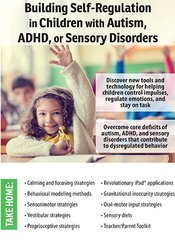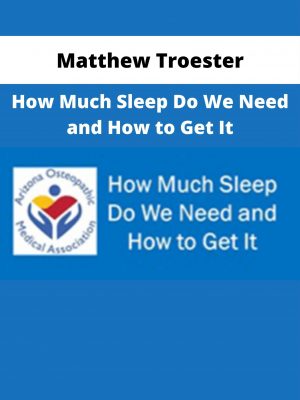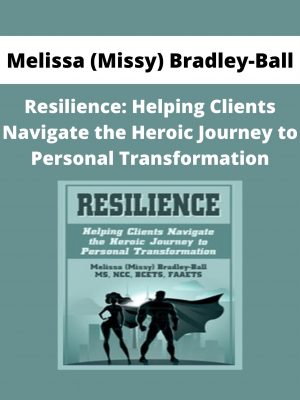Amanda Bartel – Building Self-Regulation in Children with Autism, ADHD, or Sensory Disorders
$200 Original price was: $200.$75Current price is: $75.
Shopping Instructions:
- DISCOUNT 15% : SHOP15
- Product Delivery: Within 1 – 12 hours after purchase.
Throughout the course, participants receive in-depth guidance for addressing and overcoming the core deficits of autism, ADHD, and other sensory processing disorders that contribute to dysregulated behavior.
Amanda Bartel – Building Self-Regulation in Children with Autism, ADHD, or Sensory Disorders
From classroom disruptions to earth-shaking tantrums, the challenging behavior of children who struggle with self-regulation takes many forms, often leaving parents, teachers, and therapists at a loss for how to help them succeed. As time passes without a solution, these children miss out on typical childhood experiences at school, at home with their families, and on the playground, with far-reaching developmental implications for adulthood. Take a trip inside the mind of the dysregulated child with this seminar and learn why it’s so hard to follow directions, control impulses, regulate emotions, and stay on task. Then we’ll show you how to address each of these concerns with skill-building strategies that really work.
Throughout the course, participants receive in-depth guidance for addressing and overcoming the core deficits of autism, ADHD, and other sensory processing disorders that contribute to dysregulated behavior. Learn how to use video and live behavior modeling, iPads, and the Alert Program to help children stay focused and receptive in any setting. Discuss sensorimotor strategies that support regulation in children who are at a more basic level of communication and interaction. Finally, in addition to all the tools and strategies you’ll learn today, you’ll also take home a guidebook full of step-by-step solutions that can be given to both teachers and parents for dealing with various sensory behaviors, along with fine and gross motor concerns.
- Describe the Building Blocks for Learning
- Identify parent, teacher, and clinician interventions available for building self-regulation in children with autism, attention deficit/hyperactivity disorder, and other sensory processing disorders
- Design multifaceted treatment plans that integrate vestibular, proprioceptive, gravitational insecurity, oral-motor input, and many other strategies
- Develop and use sensory diets to help children stay focused and on task throughout the day
- Discuss effective methods for integrating iPads in therapy to promote self-regulation and break through communication barriers with children on the spectrum
- Apply the Teacher/Parent Toolkit for students on your caseload
Would you like to receive Amanda Bartel – Building Self-Regulation in Children with Autism, ADHD, or Sensory Disorders ?
SENSORY PROCESSING
- Nervous System
- Building blocks for learning
- The 7 senses
- Posture
- Body image
- Laterality
- Directionality
BRAIN FUNCTION/DYSFUNCTION
- Modulation
- Self-Regulation
- Discrimination
AUTISM – DSM-5® DEFINITION
- Case study 1: Matt
- Matt’s 7 senses
- Self-regulation for Matt
SELF-REGULATION AND OTHER TREATMENT STRATEGIES FOR CHILDREN WITH AUTISM
- Picture schedule
- Carol Gray’s social stories
- Penny boards
- Sensory defensiveness…brushing, exposure to various textures
- Gravitational insecurity strategies
- Vestibular strategies
- Proprioceptive strategies
ATTENTION DEFICIT/HYPERACTIVITY DISORDER – DSM-5® DEFINITION
- Case study 2: Carey
- Carey’s 7 senses
- Self-regulation for Carey
SELF-REGULATION AND OTHER TREATMENT STRATEGIES FOR CHILDREN WITH ATTENTION DEFICIT/HYPERACTIVITY DISORDER
- The Alert Program
- 10-Step behavior chart
- Other behavior charts
- Vestibular strategies
- Proprioceptive strategies
- Oral-motor input strategies
ADDITIONAL AREAS OF CONCERN WITH SELF-REGULATION
- Anxiety
- Trauma
- Case study 3: Lee
- Lee’s 7 senses
- Self-regulation for Lee
FURTHER THERAPEUTIC TECHNIQUES FOR SENSORY PROCESSING DISORDERS
- Oral motor strategies
- Strategies for dealing with anxiety
- Therapeutic listening
- Interactive metronome
- Vestibular input strategies
- Proprioceptive input strategies
- Pica
- Toe walking
- Head banging
- Chewing on clothing, pens, paper
ASSESSMENT TOOLS FOR SENSORY PROCESSING DIFFICULTIES SENSORY DIET AND HOME PROGRAM USING THE iPAD AS PART OF TREATMENT
- Motivation
- Video modeling
- Calming Strategies
TEACHER/PARENT TOOLKIT
Related products
HEALTH & MEDICAL
Matthew Troester – How Much Sleep Do We Need and How to Get It
HEALTH & MEDICAL
HEALTH & MEDICAL
HEALTH & MEDICAL
HEALTH & MEDICAL
HEALTH & MEDICAL
HEALTH & MEDICAL
HEALTH & MEDICAL












